The fact that following the logic of its sequence this issue is a bridge that spans between two years is only partly the reason for the subject matter of the text. The more relevant one is the lasting trend which persistently shapes the nature of design, turns into an increasingly more deliberate criterion of its essence and suggests whether or not it is good. This is a trend for design to incorporate time. Time not only as a response to real time, but also time as a process – a process which connects the past and the future. Why is this becoming increasing important? Is it because although people have become better connected and more confident in terms of their location due to technologies, they often get lost and lose their way and perspectives. Is it because the planet is sending more and more signals that something has gone wrong, that the equilibrium is getting dangerously disturbed?
The claim that design is a product that should make people feel happy when using it, is indisputable but somehow seems insufficient nowadays. The everyday Epicurean interplay with functionality and aesthetics is getting tainted with doubts about a conscious feeling of irresponsibility. More than ever design goes beyond the boundaries of the product and turns into a series of actions related to understanding a problem, its communication and solution.
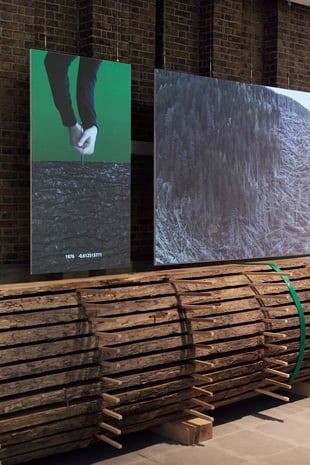 In 2020 Formafantasma studio presented Cambio (from Latin ‘change’) in Serpentine Gallery in London. The exhibition presents the wood industry as a hyper object which is to be critically monitored in order to suggest a new approach to wood resources that design uses. The project included activists – wood specialists, cultural institutions, non-government organisations, politicians and philosophers. Is there a better illustration of how design, going beyond the limits of the object, is trying to relate to the present time (the theme of the exhibition seems to add a metaphorical interpretation – it takes time for one tree to grow and the tree itself with its rings draws time lines). In fact, the larger design theme today – RE: rethink, reuse, recycle – more than ever connects design with time – the way it flies, the awareness of its existence, its humanization, transforming analogue memory to digital future.
In 2020 Formafantasma studio presented Cambio (from Latin ‘change’) in Serpentine Gallery in London. The exhibition presents the wood industry as a hyper object which is to be critically monitored in order to suggest a new approach to wood resources that design uses. The project included activists – wood specialists, cultural institutions, non-government organisations, politicians and philosophers. Is there a better illustration of how design, going beyond the limits of the object, is trying to relate to the present time (the theme of the exhibition seems to add a metaphorical interpretation – it takes time for one tree to grow and the tree itself with its rings draws time lines). In fact, the larger design theme today – RE: rethink, reuse, recycle – more than ever connects design with time – the way it flies, the awareness of its existence, its humanization, transforming analogue memory to digital future.
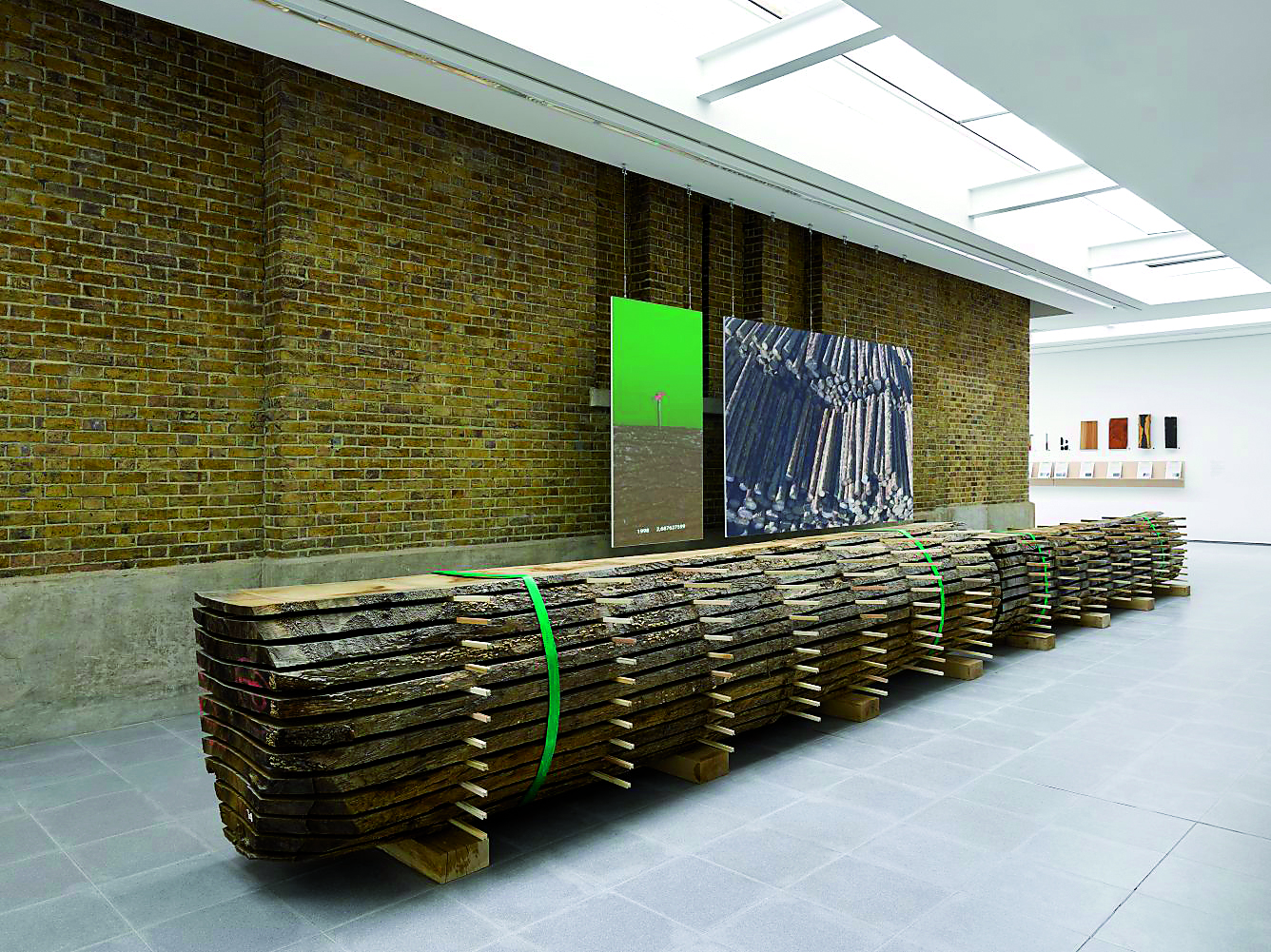 Саmbio, a project by the Italian design duo Formafantasma, presented at the Serpentine Galleries. The exhibition navigated global dynamics of the timber industry and investigated how design could shape a better future.
Саmbio, a project by the Italian design duo Formafantasma, presented at the Serpentine Galleries. The exhibition navigated global dynamics of the timber industry and investigated how design could shape a better future.
Currently there is some degree of excessiveness in relating design to the course of time which is achieved predominantly at product level. It might be that our senses respond quicker when there is a specific object involved rather than when there is a specific problem. Oftentimes this interdependence results in objects with specific aesthetics which human beings have not lost their sensitivity to. Whether it is more obvious or more encoded, the correlation time-design transforms the object into living history, open-ended story, one that does not belong to the past or the future but a story that encompasses the entire time flow and lives with the vibrations of the present.
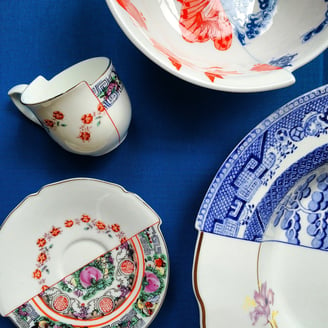
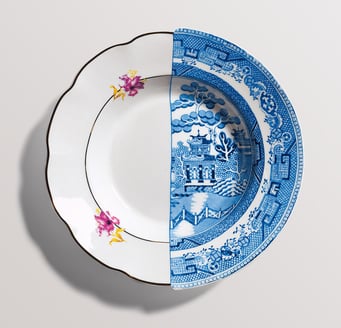
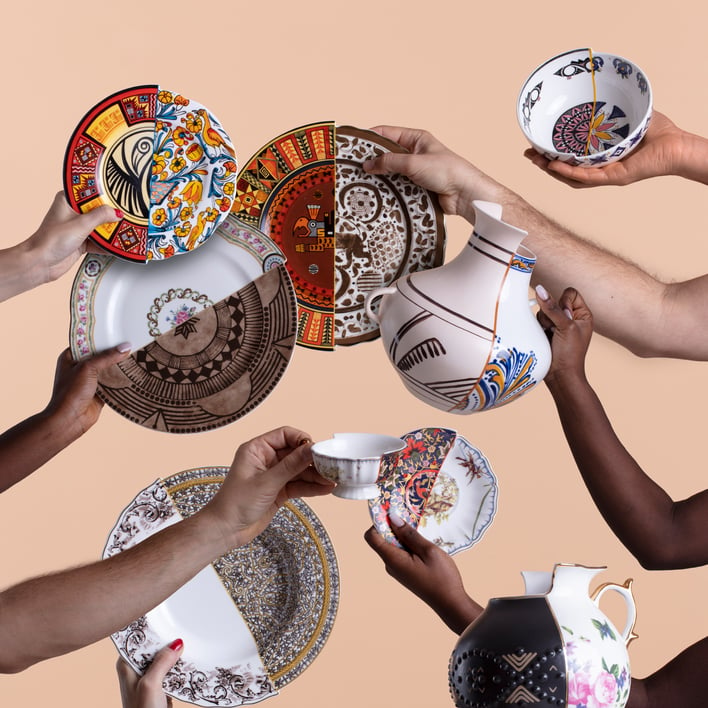
The Hybrid collection by Seletti – cultural cuts, made of porcelain.
The Hybrid collection by Seletti, for example, offers cultural cuts. One half of the pot is designed in English chinoiserie style and the other half is Delft pottery, then the two halves are glued together and the borders are outlined with a thin golden tape – a reference to the Japanese kintsugi style, thus designing a new piece. The deconstruction approach (Jacques Derrida introduced the philosophical concept in the 60s) incorporates layering of new thinking and new time over familiar examples and past times. While the cuts that Seletti makes are somewhat metaphorical and mental, the Dutchman Rolf literally ‘cuts’ antique objects and furniture. His collection Cut contains inherited family antiques which are cut to expose otherwise hidden interiors and profiles thus making them visible in the new design. Old porcelain jugs, teapots and cups are covered with concrete and after that the concrete blocks are cut disclosing the beauty of the new forms and reliefs. The achieved surreal effect undoubtedly has some charm and what seems to be especially important is that this architectural approach to making cross-sections (Gordon Matta- Clark implements this approach to old buildings) reinvents people’s ability to get surprised, to be amazed, to remember these internal spaces whose existence you are aware of but seem to forget, to take past memories into the future, to look at one’s reflection into the river of time.
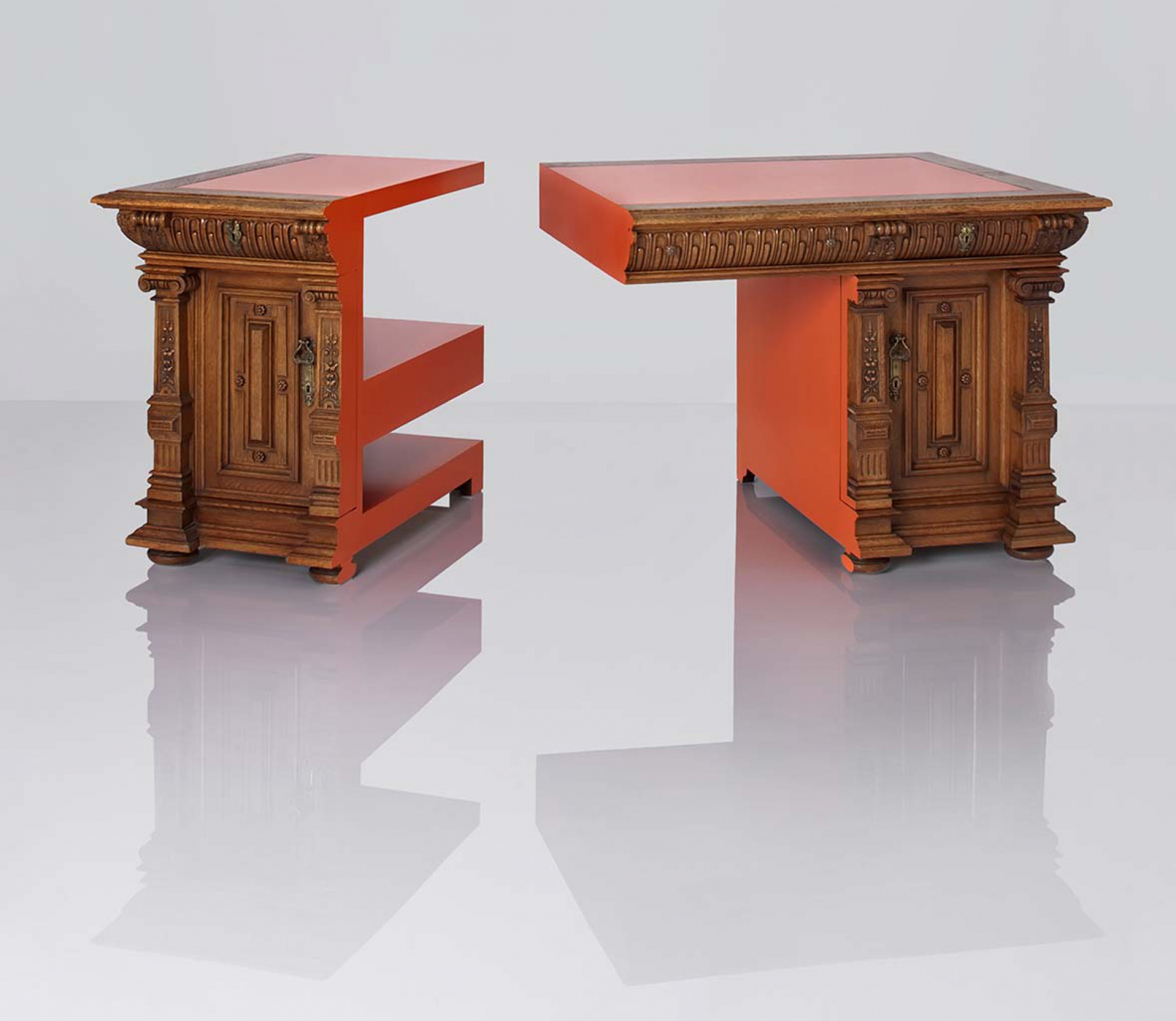
The Cut collection by Rolf - inherited family antiques cut to expose otherwise hidden interiors and profiles thus making them visible in the new design.
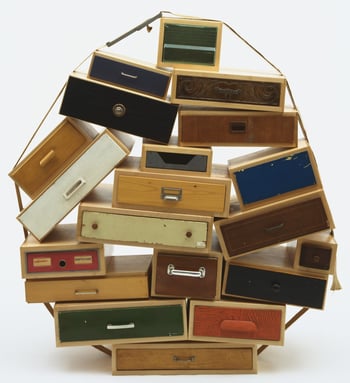
In 1991 Tejo Remi designed the You Can’t Lay Down Your Memories cabinet which became part of the first Droog Design collection an
d is now an iconic exhibit in MoMA’s latest collection reaching the exorbitant price of US$ 32, 500 at an auction at Christie’s. The cabinet is a set of old drawers held together with a jute strap. A beautiful metaphor of the nomad natural feel which helps transfer memories. And the design is seen as a gift for this need, opening spaces for it. As Remi himself puts it: ‘a man needs to transform, needs to experience the sense of freedom and play and the use of something from the past in a new different context and the change in its meaning invariably creates that feeling.”
The You Can’t Lay Down Your Memories cabinet by Tejo Remi - a set of old drawers held together with a jute strap.
Tsuyoshi Tane’s architectural studio ATTA dubbed it ‘archaeology of the future’ and stated in their manifesto: “We want to create architecture that no one has seen nor has had any experience of, nor has even imagined it. However, this does not mean that we want to create futuristic architecture. We want to create architecture which contains the deep memories of a specific place and to carry them over into the future. We work like archaeologists who dig into memories. This adds to the depth of our thoughts and confronts us with items that have been forgotten, erased or destroyed by global modernization.”
Another approach to connecting design with time which finely initiates a different philosophical trend of interpreting the theme is the Melt collection by Nendo – furniture and accessories for a table made of cast glass. We do not see the extremity of cutting with some violence exerted over the memory. In this approach the molten substance is gently left to the impact of gravity as long as it takes for time and gravity to create the new form. This is the essence of the skill implemented to create the collection. It seems to show time and the natural forces as artists and the man as a creator in this process. The designer object is created through the harmony achieved between the three elements, delicate and precise, expressing the accumulated and conscious knowledge, not aggressive but sparing, following the natural course. 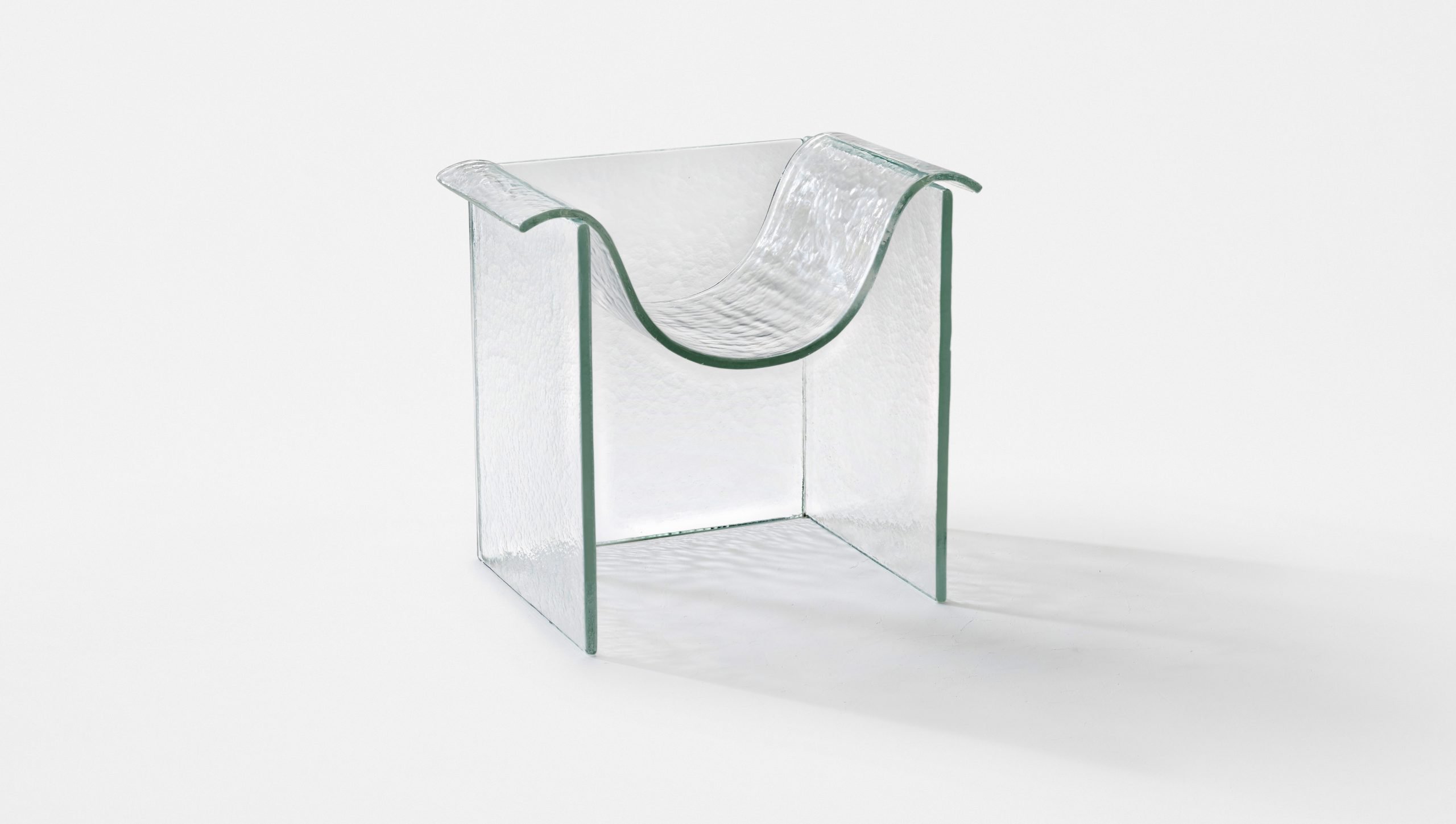 The Melt collection by Nendo – furniture and accessories for a table made of cast glass.
The Melt collection by Nendo – furniture and accessories for a table made of cast glass.
There is also a different manifestation of the successful connectivity between design and the course of time. This is the longevity of design, not only in terms of the duration of the object itself but as the duration of its philosophy. Dieter Rams, for instance, not only defines modernity in the Braun appliances, he also creates an entire philosophy which is inbuilt in the minimalist style that modern technological companies adopt. In other words, he turns Braun into Apple of his time. If his calculator Braun ET44 from 1977 and the iPhone calculator application are compared, it can be seen that they are strikingly similar. The Phonosuper SK4 phonograph was nicknamed Snow White’s Coffin but it still attracts the attention of both collectors and critics. The reason might be that it reached the core – precise, pure, inevitable, impossible to be improved – Dieter Ram’s design embodies the course of time and thus becomes timeless.
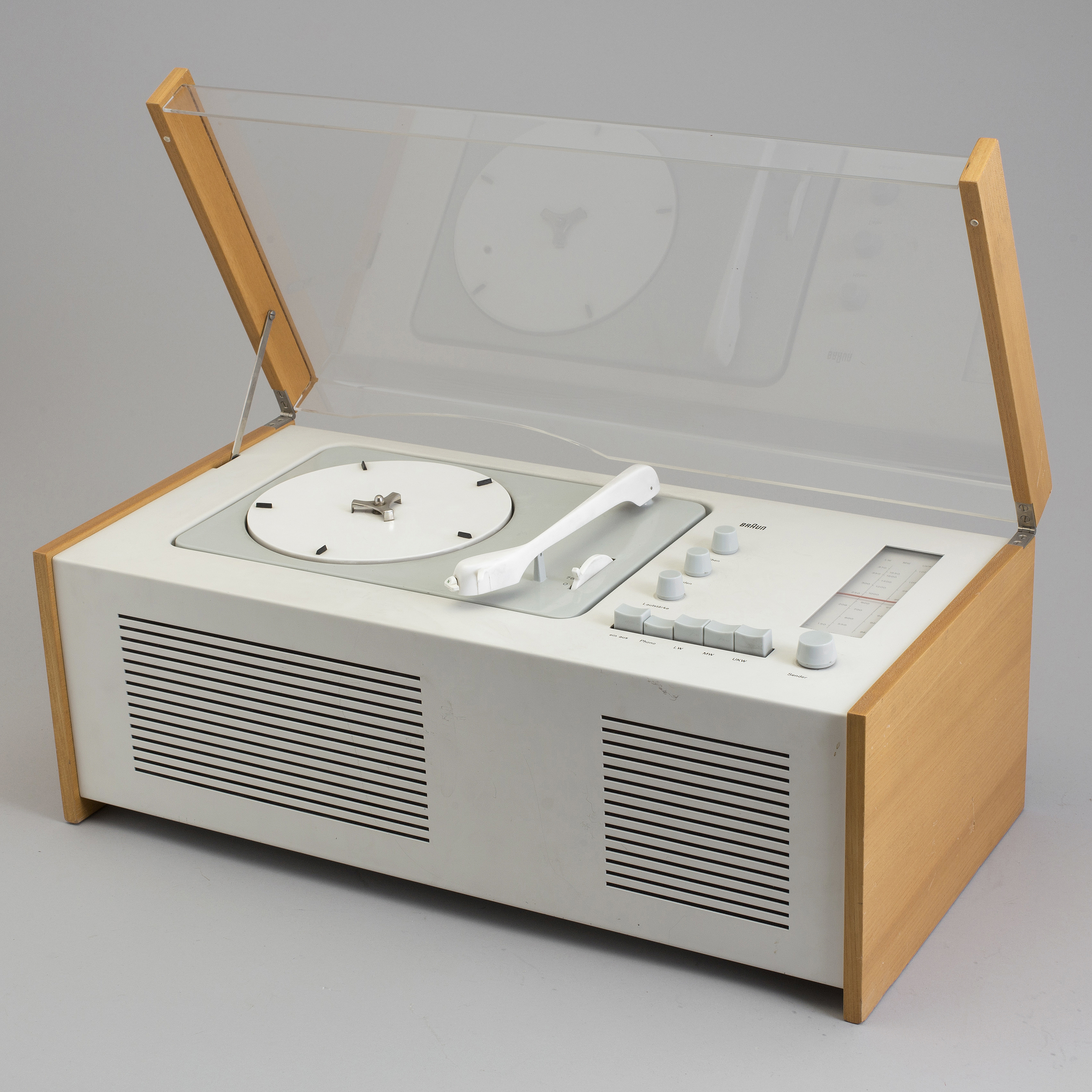 The Phonosuper SK4 phonograph, designed by Dieter Rams and nicknamed Snow White’s Coffin.
The Phonosuper SK4 phonograph, designed by Dieter Rams and nicknamed Snow White’s Coffin.
So, whether it is about the creation of a timeless object or the use of old craftsmanship skills, about a zero waste building or a modern interpretation of materiality which runs throughout the entire chain of natural resources to cutting-edge technology, design still needs to transform memories and take them to the future. In other words – to embody the course of time. All this is not a matter of sentiment, but of responsibilities. So that there is someone who would sit in the Moongazer chair, designed by the South African designer Jesse Ede and inspired by the stargazer chair which is one of the first chairs in the history of this type of furniture, and stare at the Moon. This, by the way, is something that takes time too..
Tejo Remy , Rolf, Tsuyoshi Tane, Dieter Rams, Jesse Ede
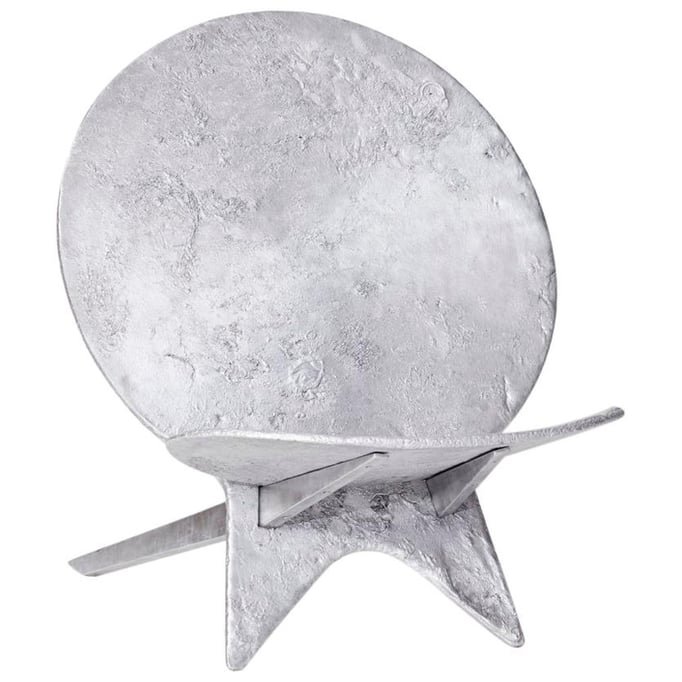
The Moongazer chair, designed by Jesse Ede and inspired by the Stargazer chair, which is one of the first chairs in the history of this type of furniture.